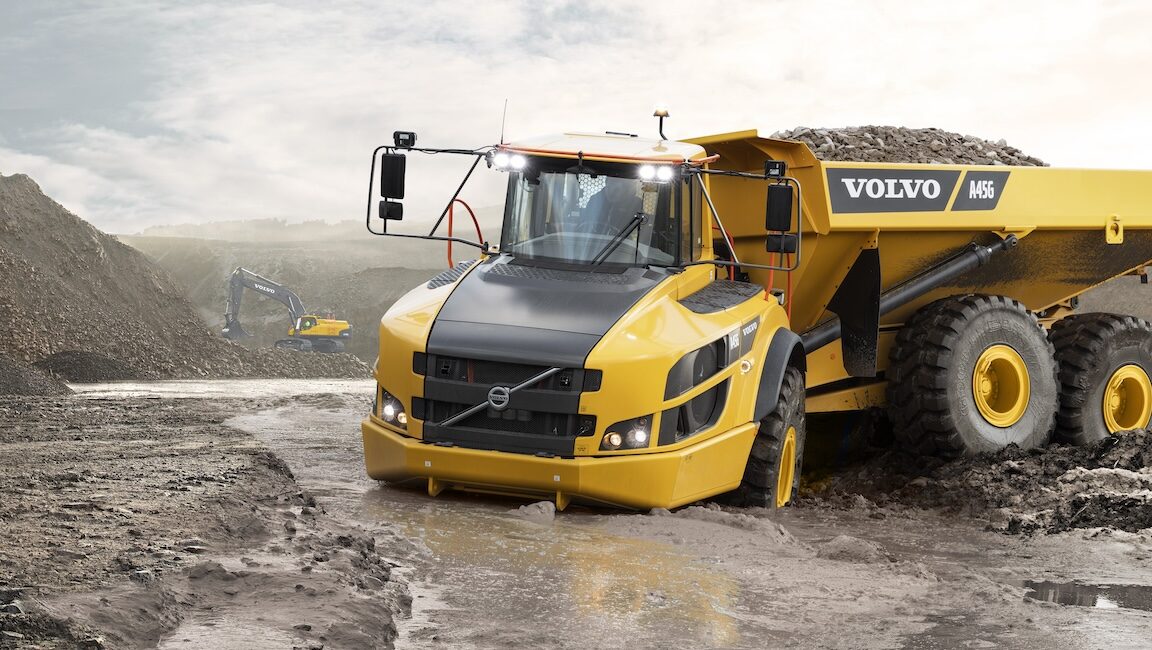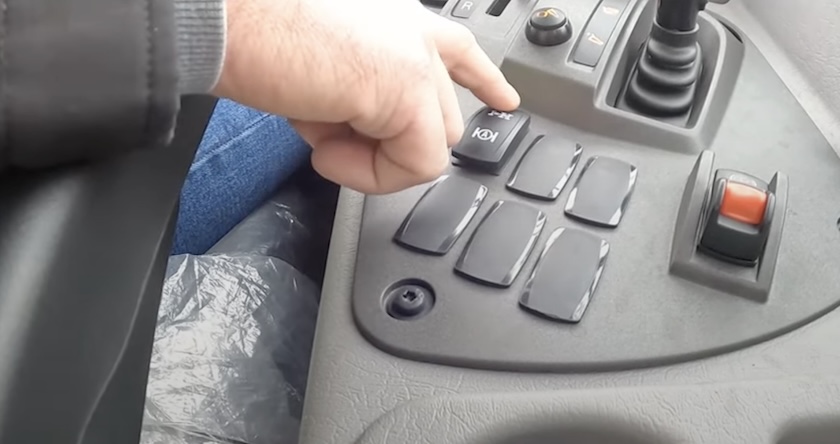How Articulated Trucks power Through The mud
Spring is here, and with it comes the rain — and the mud. Over the years I’ve heard a lot of people say that when the mud gets deep, they’ll just […]


Spring is here, and with it comes the rain — and the mud. Over the years I’ve heard a lot of people say that when the mud gets deep, they’ll just toggle on a feature on their articulated hauler like our automatic traction control (ATC) to lock in the differential locks and power through.
And while features like ATC are great at helping operators safely and efficiently navigate a wide range of terrain (solid haul roads; wet, slippery ground; mud), there are still some best practices you should follow when the mud gets exceptionally wet or deep.
Below are some tips to consider, plus answers to a few questions I hear most often:
Tips for Driving Articulated Haulers in the Mud
- For exceptionally wet, muddy conditions, always lock up the drop box along with the rear axle to help push through these types of conditions. When it’s muddy like this, it’s best practice to push the ATC switch the whole way forward to engage the differential locks.

- If you’re still slipping, you can engage 6×6 with a button on the floor — but remember, when using the floor switch, it should only be used to get you through the situation, then release it, as it’s a momentary button. If you use it all the time, it’ll cause excessive fuel burn and tire wear on your hauler. The truck will also be difficult to turn because all six wheels will be spinning together.
- It’s always best practice to use your lock-up features before you get to the muddy conditions of the haul road. You can be moving when engaging your differential locks or your 6×6 locks, but make sure that no tire is spinning faster than another (e.g. not stuck already or turning the hauler). Once you’re through the muddy situation, you can release the clutches and keep going. They’ll release once they have all of the load off of them.
- To save on fuel and maintenance costs, do your best to maintain your haul roads. Have operators split ruts rather than driving in the same tire path each time. This will help keep the haul roads in better condition and prevent your trucks from bottoming out over time.
These tips apply to nearly any brand of hauler, except here at Volvo we’re unique by having 6×4 functionality — most OEMs offer 6×6 all the time with a full lock-up button only.
Do Volvo haul trucks offer an advantage in deep mud?
They do. Our lock-up system is 100% dog clutch engagement — that means you won’t get slippage with this system. Many of our competitors use friction discs, and when you really need the power the most, the discs oftentimes slip and you lose the advantage of the 6×6.
Does tire size matter when driving a haul truck in the mud?
It depends. While you’ll typically keep the same tires year-round, if you work in wetter areas and need more flotation, you may want to consider a wider tire option. For example:
- Volvo A25G/A30G Haulers: 750/65R25
- Volvo A35G: 775/65R29
- Volvo A40G/45G: 875/65R29
By having wider tires on your hauler, it reduces ground pressure creating better flotation, so you won’t get stuck as easy. Our A60H articulated hauler only comes with the wider 33.25R29 tire, so you don’t need to worry about choosing the correct tire for conditions with this truck.
How does Automatic Traction Control work?
As I mentioned up front, a lot of operators turn to our ATC system. It can be tough to continuously assess your ground conditions and decide which drive combination is the best at that exact time. It’s also easy to wait just a little too long to change your drive combination or to operate with a 6×6 drive when it’s not needed — both of which increase fuel consumption and tire wear.
Every change takes time and your concentration off the job. Our Volvo ATC system consists of a number of sensors that control the differential locks with signals to the machine’s electronics (ECU). These sensors immediately sense the slightest wheel slip and engage the needed drive combination automatically. This means you’re always running your haul truck with the right drive combination — even when you go from a solid road to mud.

In normal mode, ATC selects fuel-saving 6×4 drive and only engages 6×6 drive when operating conditions call for it.
ATC is great for inexperienced operators because they can get into the job very quickly without any extended training — and for more experienced operators, it just makes work that much easier.
When you’re always operating with the correct drive combination, your jobs can be completed faster. It also reduces fuel consumption by up to 6 percent — and the machine’s environmental impact is reduced by just as much.
I want to close with a reminder that ATC isn’t simply a “set it and forget it” feature. Again, if you’re driving in deep mud all the time, you need to ensure your operator engages the differential locks with the ATC switch the whole way forward — almost like turning on 4-wheel drive in your pickup truck. This will help decrease wear and tear on components like the drop box. You really only want to use the ATC function all the time if you have fairly decent haul roads and not a lot of soft under footing.
I hope these tips help you effectively power through the deepest mud this spring — and muddy season or not, if you’re in the market for a new hauler, you can see our full line of articulated haulers here.
Categories: Insights


